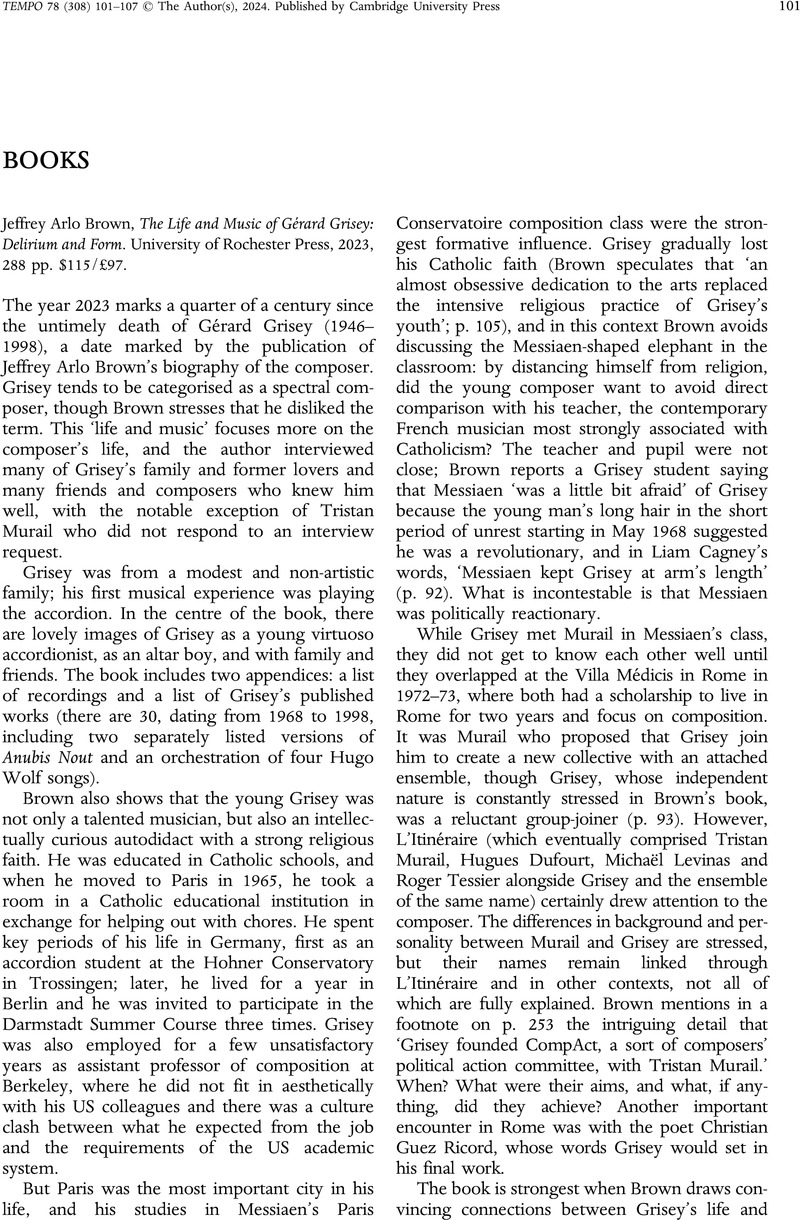No CrossRef data available.
Jeffrey Arlo Brown, The Life and Music of Gérard Grisey: Delirium and Form. University of Rochester Press, 2023, 288 pp. $115/£97.
Review products
Jeffrey Arlo Brown, The Life and Music of Gérard Grisey: Delirium and Form. University of Rochester Press, 2023, 288 pp. $115/£97.
Published online by Cambridge University Press: 01 April 2024
Abstract
An abstract is not available for this content so a preview has been provided. Please use the Get access link above for information on how to access this content.

- Type
- BOOKS
- Information
- Copyright
- Copyright © The Author(s), 2024. Published by Cambridge University Press



